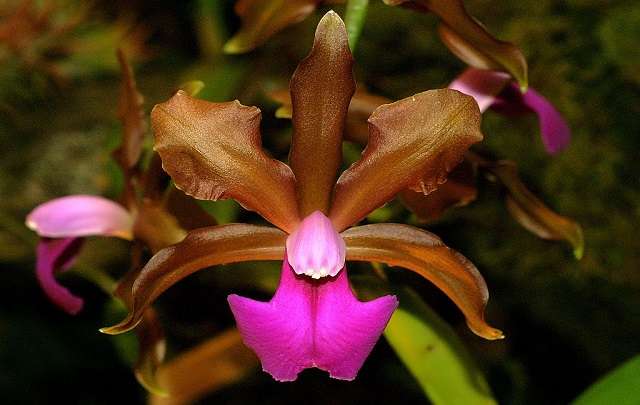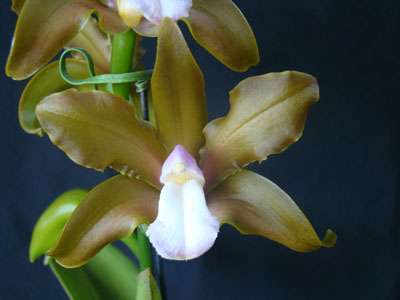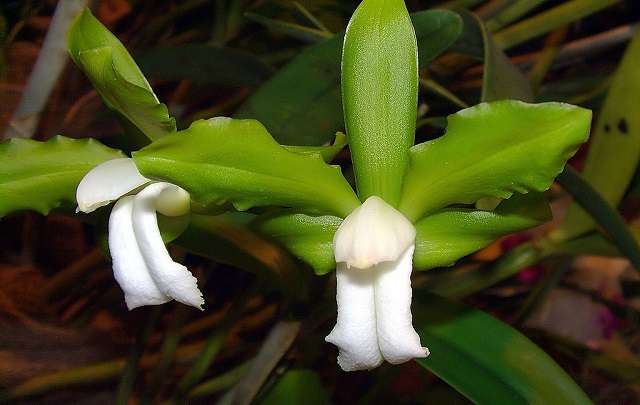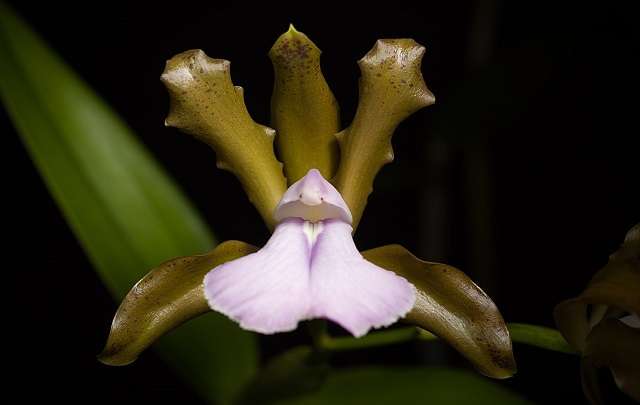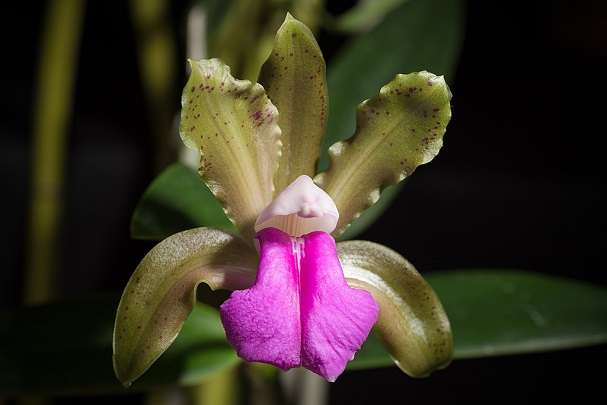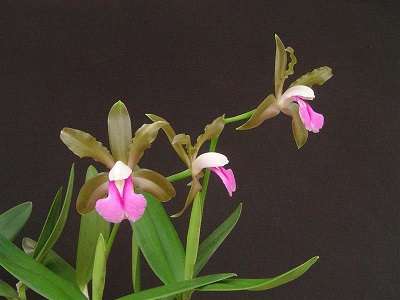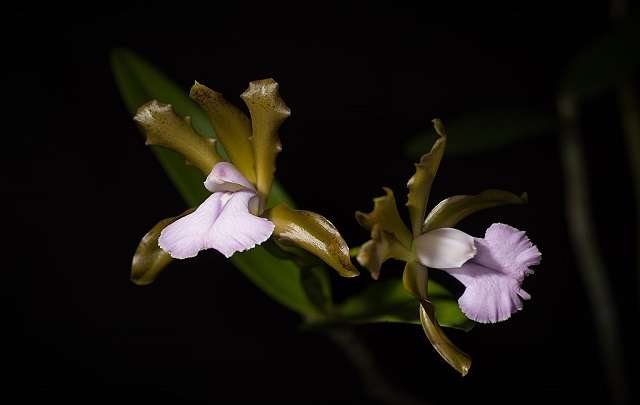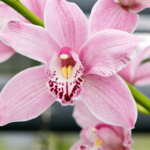The Cattleya Bicolor is a Brazilian orchid. It can be found in the following states:
- São Paulo
- Rio de Janeiro
- Minas Gerais
- Espírito Santo
This orchid has gained prominence for two main reasons, its colors, and its genes.
In this article, you will learn more about this Cattleya, its characteristics, and how to cultivate it.
Learn How to Achieve Super Blooms on Your Orchids
🛑 If you love orchids and you're tired of not being able to make them bloom...
Then, know that thousands of beginner growers are achieving beautiful flowers on their orchids by following this method.
Click the button below to have beautiful orchids with show-worthy flowers every year. ⤵
Characteristics
Being mainly found in the cerrado, this is an orchid with epiphytic habits, meaning it lives on top of trees.
But it can also be found on organic materials on the ground (terrestrial) or on rocks (rupicolous or lithophyte).
The Cattleya Bicolor orchids are one of the rare bifoliate orchids.
Bifoliate: they have two leaves at the apex of each pseudobulb, exceptionally they can have one or three leaves.
This is an orchid whose cultivation is a bit more complicated than other Cattleyas, but it is still very famous among orchid enthusiasts.
Its Flowers
The Cattleya Bicolor got its name due to the two predominant colors in its flower, brown and purple.
Its flowering occurs in late summer (March or April), but in some cases, it can also produce flowers at the end of the year.
Here are some characteristics of its flowers:
- Each floral stem produces an average of 5 to 8 flowers
- The flowers are fragrant
- Each flower is 2.75 to 3.5 inches (7 to 9cm) in diameter
- The floral stem reaches up to 4 inches in length
- Its flowers last an average of 20 days
And these are just a few of the advantages of this orchid; it also has several varieties.
Its variations include:
- Alba
- Coerulea
- Semi-alba
- Suave
- Punctata
- Type
- Among others
Now that you have discovered more about these beautiful flowers, it’s time to learn how to make your orchid bloom.
How to Cultivate Cattleya Bicolor
This Cattleya has slightly more complicated cultivation than others.
Its roots are a bit more sensitive and need the right humidity to develop. Therefore, if you are a beginner grower, we recommend starting with these Cattleya species:
Now, if you want to learn how to cultivate the Cattleya Bicolor, keep reading.
Temperature
This orchid prefers moderate temperatures.
The ideal temperature range is:
- Day: between 68°F to 82°F (20°C to 28°C)
- Night: between 60°F to 68°F (16°C to 20°C)
As mentioned in the article on how to make your orchid bloom, most orchids require a drop in temperature at night.
In the case of this Cattleya, it is recommended to provide temperatures that are on average 43°F to 46,5°F (6°C to 8°C) lower.
Lighting
This orchid enjoys plenty of light, but be careful not to overdo it.
It is recommended that it receives sunlight all day, but this sunlight should be filtered through a 50% shading screen.
Another option is to expose it to direct sunlight until 9:00 in the morning and again in the late afternoon.
NOTE: Keep in mind that if you do not provide good lighting for this orchid, it will not bloom.
To determine if your Cattleya is receiving the correct lighting, you can use this rule:
- Leaves are more yellowish (excess of lighting)
- Leaves are darker green than normal (insufficient lighting)
The color of its leaves should be similar to a light green like lettuce.
Where to Plant
As this orchid is usually an epiphytic orchid, avoid planting it in the ground.
For the Cattleya Bicolor, it is recommended to plant it in:
- Terracotta pots, as they provide good drainage
- Plastic pots, as they are lighter and easier to find
- Cachepot pots when you will hang them
- Trees
- Attach it to something
Each of these locations has different requirements; for example, the orchid planted on trees needs to be watered more frequently than the one planted in a plastic pot.
But know that when your orchid grows, it will likely reach about 3 feet in height. During this development, you need to use a tutor so it can lean on it.
Humidity and Watering
As mentioned before, humidity is the factor that will most complicate its cultivation.
This is an orchid that likes high humidity and frequent watering.
So, be very careful not to let the humidity drop below 50%, as this will greatly affect your Cattleya Bicolor.
Here are some tips:
- On hotter days, increase the air humidity with a pot full of water and pebbles next to your orchid (never below it)
- On hotter days, it may be necessary twice a day
- Water and fertilize only when the sun is not strong (early morning or late afternoon)
- When fertilizing, be careful not to get the fertilizer on the leaves and flowers of your orchid, as this can interfere with flowering.
Do You Want to Learn How To Keep Your Orchids Healthy And Ready to Bloom Every Year?
So, I prepared a complete guide, step by step and illustrated, that will show you:
• The secrets to getting beautiful flowers every year
• How to fight and identify pests and diseases on your orchids
• THE MAGIC SUBSTANCE for orchids and how to use it
• And much, much more.
The great news is that the manual is now available at a super discount!!
But beware, it's only for the first buyers.
Click on MORE INFORMATION below and discover the secrets to show-worthy flowers. 👇
Potting Mixes
This is an orchid that loves humidity, but it also needs excellent drainage.
Therefore, the ideal potting mixes for it will offer a bit of each of these needs.
The ideal potting mixes for the Cattleya Bicolor are:
- Pine bark
- Charcoal
- Gravel
- Sphagnum moss
- Coconut fiber
- Among others
Choose some of these substrates and mix them for your orchid.
NOTE: Always use gravel or perlite at the bottom of the pot.
Reproduction
Finally, a curiosity about this Cattleya.
Its reproduction is done through clump division, but it can also be done in various other ways.
But the great curiosity about this plant is its genetics.
Due to its “strong gene,” the Cattleya Bicolor is used in the formation of several hybrids worldwide.
The most famous is probably the Brassoleliocattleya Crowfield, which contains 50% of its genes from the Cattleya Bicolor.
Conclusion
The Cattleya Bicolor is undoubtedly one of the most beautiful Cattleyas.
With it, you can have beautiful blooms, create several hybrids, and be very satisfied with the beauty of this plant.
This is an exceptional orchid to grow.
If you want to learn more about orchids, below are some articles that might interest you:
- Orchid Care for Beginners: Quick and Easy 7-Step Guide
- Black Orchid (Brasilorchis schunkeana) – Its Types, Curiosities and Photos
- Dendrobium Nobile – How to Care, Photos and Curiosities
- Monkey Face Orchid – Photos, Curiosities and Much More
And now it’s your turn to help us; share this article on your social networks by clicking on the icons below, as it helps us teach more people about this orchid.
See you next time 😀

